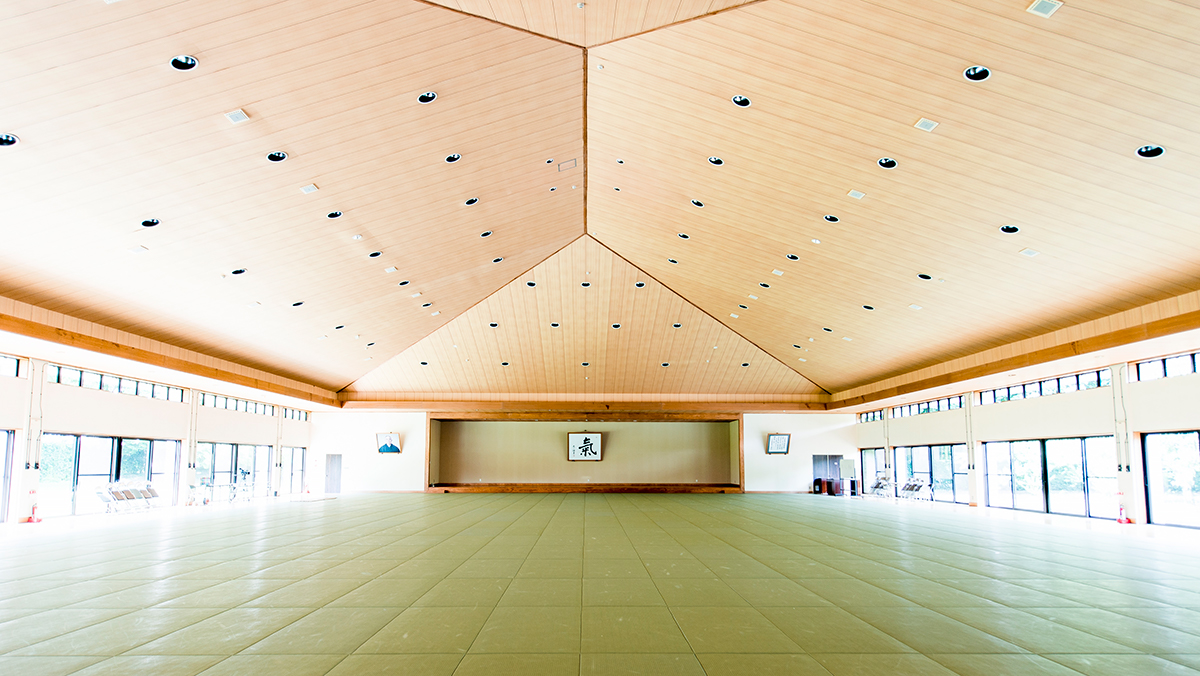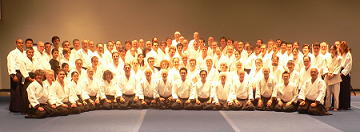A Short Instruction:
The purpose of this kind of article is to practice and validate the Ki principles (Mind moves body) which are the foundation of Ki-Aikido in your daily life. Therefore, it has no meaning if you just read it without practicing it.
The fundamental method of mastering anything is practice. However, not just practice, but it is also important to validate how one has changed as a result of the practice.
It is easy to lose what you have learned without practice. On the other hand, you will never lose what you have learned through practice and validation. Therefore, please read, practice, and validate the contents of my article at least a month.
Calming your breathing
I have the great opportunity to be instructing many professional athletes.
A common worry among them is not being able to have control over when they are in good condition and poor condition.
Whether they are in top or poor form is largely affected by the state of their minds and that state is constantly changing.
Even if they themselves intend to keep the same state of mind, when they are in poor shape the state of their mind has changed.
To correctly know the state of the mind is generally extremely difficult. This is because it changes before even they themselves notice it.
For this reason, I make sure that I teach them Ki Breathing..
Many people have never turned their attention to their breathing, but if their breathing becomes calm, then their mind also becomes calm.
The most important point is to always have calm breathing and to become able to notice when your breathing is rough.
However, it is difficult to notice that your breathing is rough when it is so. .
At such times we tense up and strain ourselves, before we become aware of what we are doing.
Should you notice that your breathing has indeed become rough, then the only thing for it is to do Ki breathing.
However, if you are not aware of it, then there is no way you can deal with it.
The reason many professional athletes deeply understand Ki breathing is surely because they compete in a tough environment where failure is not an option.
It is the same when performing a Shin Shin Toitsu Aikido technique.
In the latter part of July there will be the All Japan Ki Aikido Taigi Competition, and I would like all those who are planning to attend to read (the following) carefully.
Even though you intend to perform with a constant state of mind, there are times when your state of mind has actually changed and you cannot perform as you hope to.
The most extreme example of this is when you are tense and your body does not move as you wish it to.
In order to demonstrate your real ability in important situations, such as your performance, you should always calm your mind and perform with a constant state of mind.
The breath is a manifestation of the mind, so you should always undertake the discipline of calming your breathing and then do your performance in the same way; in a state where your breath is calm.
If you become able to do this, you will be very strong in important situations.
Everybody knows it is an important thing to “calm the mind.” The question is how to do so.
A concrete method for doing this is Ki breathing.
I give lectures and instruct at seminars for over three hundred days per year. If I am ‘merely’ giving them, then of course there will be times when I am in good or poor condition.
Thus I make sure I perform Ki Breathing before the instruction or lecture.
The times when my breath is rough and I cannot do Ki breathing well are, as I wrote previously, the times when I am stressed and straining.
If I give instruction in such a state, then the possibility of failure is high.
Therefore, by doing Ki breathing until my breathing becomes calm, I am able to take the lecture in a state where my mind has also become calm.
Then naturally enough I succeed.
I absolutely cannot neglect to do Ki breathing.
For those of you unfamiliar with Ki breathing methods, I would like you to urge you to read Koichi Tohei Sensei’s book ‘Ki Breathing(Ki no Kokyuho)’ in Japanese. (This book has been translated and uploaded on this weblog)
After you have read this book, I would like you to turn your attention to your own breathing as your way of implementation and verification for this time.
Within one breath, there are bound to be many things to notice.
Let’s practice and validate the following:
[Things to practice]
Observe your own daily breathing
[Things to validate]
Find out at what times does your breathing become rough
Find out the reason why it became rough


